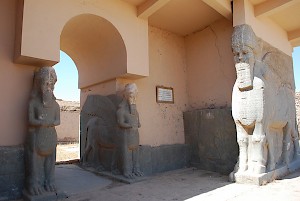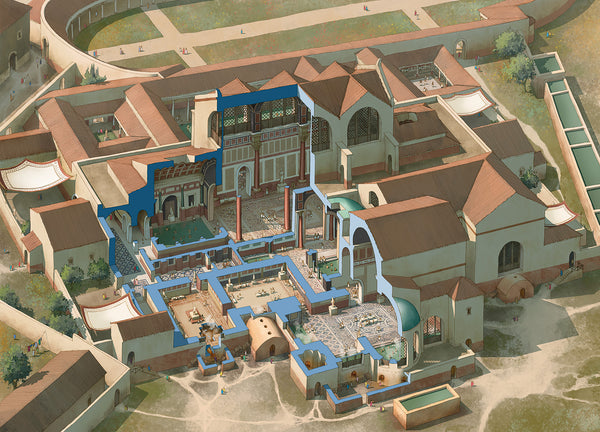Nimrud liberated

There is not much evidence yet – just two independent messages on Twitter – but it seems that the Iraqi army has, during its advance to Mosul (ancient Nineveh), liberated Nimrud.
“Nimrud” is not the real name of the ancient capital of Assyria. The city’s real name is Kalhu. The name “Nimrud” is Medieval and goes back to a Biblical reference to a great hunter (Genesis 10.9). In Jewish, Christian, and Islamic legend, this legendary hunter became connected to the story of Abraham, and in the Middle Ages, many old buildings and ruins were named “Nimrud”. In Turkey, there’s the sculpture on Mount Nemrut; in Israel, there’s a Crusader Castle; in Iraq a complete city. All called Nemrud, all Medieval names.
Kalhu was founded in the thirteenth century BC at the confluence of the rivers Zab and Tigris. The city had an eight-kilometer long wall, palaces, temples. In the mid-ninth century, it became the capital of Assyria, until King Sargon founded Khorsabad in c.700 BC. Assyria’s final capital was Nineveh.
In the nineteenth century, Kalhu/Nimrud was one of the first major archaeological excavations. Granted, the researchers acted like treasure hunters, but they knew what their discovery meant. At that moment, known history lasted from Homer to the age of Queen Victoria; to these twenty-six centuries, the discoverers of Assyria added another twenty-two.
They also found cuneiform tablets. Thousands of them. The corpus of Assyrian and Babylonian texts is as large as the corpus of pre-Christian Latin texts (and still growing). As milestones in the growth of human knowledge, Kalhu/Nimrud and Nineveh/Mosul are only comparable to the periodic table of elements, the absolute zero, the first law of thermodynamics, and Mendelian genetics (to mention some contemporary breakthroughs).
The looting of Nimrud started after the overthrow of the regime of Saddam Husein and intensified when the so-called Islamic State came to power. In 2015, it announced that it would demolish the city and it has, indeed, bulldozed some monuments. Fortunately, more vandalism is necessary to completely destroy an ancient ruin – even when looting has lasted thirteen years. Perhaps illegal digging has done more damage. We will learn more within the next few weeks.
Finally, two related pieces of news: Balawat has been liberated too, the place where the “Balawat Gates” were found that are now in the British Museum. There is also a report that the terrorists are regrouping in southwestern Mosul, which suggests that there will be no fighting in the area of ancient Nineveh.
And on a related note, Assyria’s capital Nineveh will be the theme of the next issue (no. 7) of Ancient History Magazine (subscribe).

